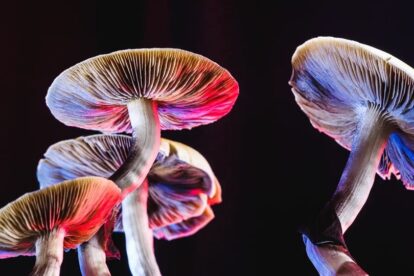The Difference Between Persistent Depressive Disorder and Major Depression

Depression comes in many different varieties recognized by mental health professionals. Persistent depressive disorder (PDD) is a long-term, chronic type of depression. It causes similar symptoms to major depression, including sadness, fatigue, hopelessness, and changes in eating and sleeping patterns. PDD is typically milder, but it still causes dysfunction and impairs quality of life. Getting a diagnosis is important and should lead to effective professional care to help manage this condition and reduce symptoms.
If you feel down most days, struggle to get through the day, feel hopeless and can’t seem to get relief for weeks on end, you may have persistent depressive disorder.
This is a real mental condition, and while it’s less severe than major depression, it can still have serious consequences. Reach out for help and get a diagnosis. Residential care can help.
Depression is a mental illness, a description of a mood, and a clinical term that encompasses several subtypes.
All types of depression affect mood and the ability to function.
Depression can take several forms varying by symptom type and duration, gender and age, medical condition, and more:
- Major depression causes serious, persistent feelings of sadness and other symptoms that make functioning or enjoying life very difficult.
- Persistent depressive disorder is a milder but more chronic and lasting form of depression.
- Bipolar depression alternates with periods of mania, an elevated and dangerously high-energy mood.
- Perinatal and postpartum depression occurs during and after pregnancy and giving birth, and causes symptoms ranging from moderate to severe and potentially life-threatening.
- Premenstrual dysphoric disorder is a severe type of PMS, which occurs in the days or even weeks leading up to menstruation.
- Seasonal affective disorder causes depression in a seasonal pattern, most often in winter but in rare cases in spring and summer.
- Psychotic depression is a severe episode of depression that causes delusions and hallucinations.
Mental health professionals also recognize other types of depression, such as situational depression, which occurs in response to a major life event, like a death. Certain illnesses or medications can trigger depression. There are also atypical cases of depression that don’t follow all the same patterns of other types.
Understanding the Clinical Terminology
The clinical term depression most often refers to major depression, also known as major depressive disorder. This mood disorder causes persistent sadness and a loss of interest in normal activities or things a person used to enjoy.
If you have depression, you likely have many other symptoms, but these two are the most characteristic signs of major depression. Other symptoms include difficulty thinking, feelings of guilt or shame, irritability, and changes in sleep or eating patterns.
Major depression causes symptoms severe enough to interfere with your daily activities. They typically persist daily for at least two weeks.
Persistent Depressive Disorder
Persistent depressive disorder (PDD) is also known as dysthymia. It is a chronic, long-term type of depression that lasts for at least two years. The symptoms are similar to those caused by major depression but are generally not as severe.
Even though PDD symptoms are milder, they can fluctuate from mild to moderate and sometimes be severe. The symptoms never go away for longer than a couple of months at a time. They can also impair normal functioning and interfere with normal activities.
To other people, someone with PDD may seem fine, if a little gloomy. Although you may be better able to cope with daily life with this condition as compared to major depression, it still causes significant distress and dysfunction.
The Differences in Diagnosis
One way to look at the differences between these two types of depression is to see how mental health professionals diagnose them. The fifth and most recent edition of the Diagnostic and Statistical Manual of Mental Disorders lists nine symptoms characteristic of major depression:
- A depressed, sad mood
- Loss of interest in most activities, also known as anhedonia
- Changes in appetite or weight
- Insomnia or sleeping more than usual
- Agitation, or the opposite, slowed physical movements and thinking
- Fatigue
- Feelings of being worthless
- Difficulty thinking, concentrating, and making decisions
- Thoughts of death or suicide
To be diagnosed with major depression, you must have at least five of these symptoms, including either number one or two, or both. They must cause impairment in how you function or trigger significant distress for a minimum period of two weeks.
The criteria for a diagnosis of PDD includes symptom number one above, a depressed mood, most days, for at least two years. Additionally, you must have at least two of the following symptoms:
- Changes in appetite or weight
- Changes in sleeping patterns
- Fatigue
- Low self-esteem
- Difficulty concentrating, thinking, and making decisions
- Feeling hopeless
The depressed mood, plus two or more of these symptoms, must persist for two years or more, affecting you most days and without a break for longer than two months.
Call for a Free Confidential Assessment.
877-727-4343Clearly, there are many similarities between major depression and persistent depressive disorder. The differences are important for those who experience the condition known as dysthymia. A major one is severity. PDD is milder most of the time. A major depressive episode can leave you unable to get out of bed, perform basic hygiene, or get enough to eat.
Another big distinction is duration. Major depression can last a long time, but it tends to come and go. PDD is called persistent because relief is infrequent and limited. It lasts at least two years. If you have major depression, you’ll feel normal for long periods of time. With PDD, you may always feel at least a low-level of depression.
Symptoms are largely similar for these two conditions, but anhedonia is much more characteristic of major depression. PDD is also less likely to trigger thoughts of suicide and it doesn’t change your affect, causing agitation or slowed movements.
One of the most important but often overlooked differences between these two conditions is how others perceive them. If you live with PDD, other people may not be able to tell that you have depression. You function well, so they assume you’re fine when in reality you struggle daily. This can add to the burden of living with a mental illness. It has an invisible element that means people tend to be less sympathetic or supportive.
Persistent Depressive Disorder Is a Serious Mental Illness
Just because the symptoms are often milder than those of major depression does not mean you should take PDD lightly. It reduces quality of life, makes getting through every day more difficult, and increases the risk of developing other mental illnesses or a substance use disorder. It can also increase the risk of suicide.
It’s important to seek a diagnosis if you feel down all the time. Don’t assume lack of severity means you have to live this way. Like major depression, dysthymia is treatable. You can learn to manage this illness, improve your mood, and enjoy a greater quality of life.
You don’t have to live with this constant, low-level of depression and hopelessness. Help is similar as for other types of depression and is just as important for managing symptoms and potential complications.
Treatment is similar to what people with major depression receive: medications, therapy, and lifestyle changes. While some people assume this condition is not serious enough for antidepressants, studies show medications can be helpful for many people with PDD.
Of course, you should never use medication alone to treat depression. Combined with therapy that helps you manage your negative thoughts and moods, the proper course of medications can also be effective in reducing symptoms and episodes. Lifestyle changes help too, including a healthy diet, exercise, and relying on social support.
If you or someone you care about is struggling with what you may describe as low-level or minor depression, seek professional support. This is a real, serious condition that you don’t have to live with forever. A residential facility or outpatient program will help you learn how to live with and overcome PDD.






